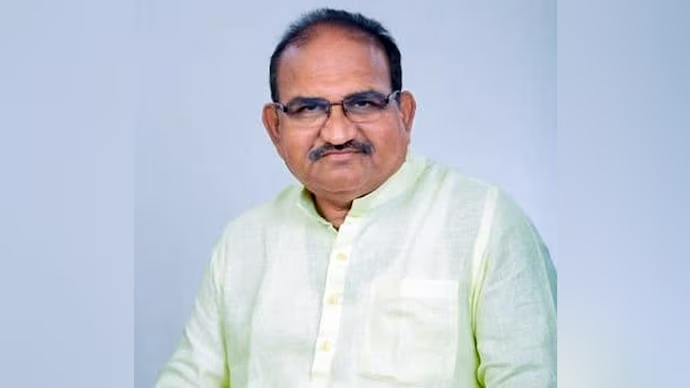Decode Politics: Why a BJP MLA Calls Out a ‘Historic Blunder’ in Odisha, Leaving the Party on the Defensive
Politics Politics of IndiaPosted by NewAdmin on 2025-03-13 08:37:08 |
Share: Facebook | Twitter | Whatsapp | Linkedin Visits: 84

Senior BJP leader Jayanarayan Mishra has stirred controversyby labeling the merger of Odisha’s western region, Kosal, with the state as a“historic blunder.” This statement has drawn sharp criticism from the BijuJanata Dal (BJD), the main opposition party, which accuses the ruling party ofattempting to “divide the state.”
Although the BJP has distanced itself from Mishra’s remarks,the BJD has seized the opportunity to criticize the government, even raisingthe issue in the Assembly, where it sparked an uproar. Opposition and Treasurybench members clashed during Question Hour, escalating tensions. Mishra, afive-time MLA from Sambalpur in Kosal, made his controversial comments lastFriday during a government event in his constituency, highlighting the region’slong-standing neglect. He claimed, “We have been exploited in every sector...mining, agriculture, forests, and services. We have been denied our culturalrights. The integration of Kosal with Odisha was a historic blunder.” Theseremarks have put the BJP in a difficult position, especially since the partyran its 2024 Assembly campaign on a platform of promoting “Odia Asmita” (Odiapride) and managed to defeat the BJD decisively. Senior BJD leader RanendraPratap Swain questioned, “Is this the pride (asmita) they were referring to?”Congress leader Niranjan Patnaik criticized Mishra’s statement, claiming itdiminishes the state’s history. In response, the BJP emphasized that Mishra wassharing his “personal opinion.”
Mishra, however, defended his statement, saying he wasadvocating for the development of his region and that he had not said anythingwrong.
What is the Kosal region?
Kosal, or Kosalanchal, refers to the western part of Odisha,with a population exceeding 2 crore. It includes 10 districts: Sambalpur,Jharsuguda, Sundargarh, Bargarh, Kalahandi, Nuapada, Deogarh, Sonepur, Boudh,and Balangir, most of which border Chhattisgarh. While Odisha was created in1936 based on linguistic lines, the Kosal region merged with the state only in1948, following Independence, when other princely states joined the IndianUnion. The merger was initially opposed by rulers from Patna, Kalahandi, andSonepur, who demanded either a separate Kosal state or local autonomy, fearingpolitical dominance from the coastal region.
How did the demand for Kosal statehood grow?
After the merger, the demand for a separate Kosal stateinitially faded. However, in the 1990s, it gained momentum. Prem Ram Dubey, alawyer from Sambalpur, revived the movement by arguing that the region had beenneglected since its integration into Odisha. Dubey published the KosalKhabar newspaper, formed the Kosal Sena, and submitted a memorandum to thePresident. The demand gained further support when Pramod Mishra established theKosal State Coordination Committee in 1996, highlighting the region's economicneglect and political underrepresentation. The movement gained additionaltraction in 2004 when Bal Gopal Mishra, a former BJP MLA from Balangir,launched the Kosal Mukti Rath Yatra. During this period, Deputy Prime MinisterL K Advani, while visiting Balangir, indicated that the central governmentwould consider the demand for a separate Kosal state if the Odisha Assemblypassed a resolution in favor of it.
How have successive governments intervened?
Former Chief Minister Biju Patnaik formed a committee in1991 to investigate regional disparities. Its 1994 report identified 34 “verybackward” and 25 “backward” blocks in western Odisha. To address theseimbalances, the state government set up the Western Odisha Development Council(WODC) in 1998 with an initial grant of Rs 3 crore. The BJD governmentallocated Rs 500 crore to the WODC in the 2024-25 Budget, and the BJPgovernment continued this allocation with an additional Rs 200 crore for thenewly-formed Northern and Southern Odisha Development Councils in the 2025-26Budget.
In 2004, the Naveen Patnaik-led BJD government set up acommission under S K Mohanty to study regional imbalances. Though the panelsubmitted its report in 2008, the government did not release it.
What is the political significance of western Odisha?
Western Odisha, with five Lok Sabha seats and approximately38 Assembly seats, plays a pivotal role in the state's political landscape.Successive governments have made efforts to ensure adequate politicalrepresentation from the region. Traditionally a Congress stronghold, the BJPhas now established a strong foothold, particularly compared to its position inthe coastal and southern parts of Odisha. During the 2019 Assembly elections,then CM Naveen Patnaik contested from Bijepur in Bargarh district to counterthe BJP’s growing influence. Although Patnaik won both the Bijepur and Hinjiliseats, he later vacated Bijepur. In the 2024 elections, he contested fromKantabanji in Balangir to address BJP’s surge, but ultimately lost to the BJP.
With the BJP forming its first government in Odisha, theparty appointed K V Singh Deo from western Odisha as one of the two deputy CMs.Additionally, three Cabinet ministers hail from the region. The BJP alsosecured 20 of the state’s 21 Lok Sabha seats, with Sambalpur MP DharmendraPradhan and Sundargarh MP Jual Oram joining the Narendra Modi Cabinet.
Search
Categories
Recent News
- Hyderabad Crypto Scam: Unraveling a Multi-State Fraud
- Hyderabad's Unified Crime-Fighting Strategy: Zero Delay, One City
- Hyderabad Cracks Down on Drunk Driving: 867 Arrested
- Hyderabad Gears Up for Presidential Visit: Traffic Plans Unveiled
- Telangana High Court Scrutinizes Traffic Police Challan Practices
- Hyderabad Gears Up for Presidential Visit: Traffic Plans Unveiled
- Hyderabad's Festive Cheer Shadowed by Online Fraud Alerts
- Hyderabad's Cyber Crime Police Warn of Festive Fraudsters
Popular News
- Navigating IPO Market Dynamics Amid Volatility and Regulatory Changes
- Innovative Green Practices and Environmental Initiative
- Massive Worldwide Microsoft Outage Disrupts Multiple Sectors
- తెలుగుదేశం పార్టీ - పేదరికాన్ని నిర్మూలించడంలో వాగ్దానం
- Universities Embrace Remote Learning Technologies Amidst Ongoing Pandemic